Abstract
The impact of the anti-smoking campaign on the consumption of cigarettes is measured by fitting cigarette demand functions to pre-campaign dat, projecting "ahead" as if the campaign had not occurred, and then comparing these predictions with realized consumption. The analysis suggests that major "events" in the campaign (e.g., the Surgeon General's Report) caused immediate though transitory decreases of 4 to 5 per cent in annual per capita consumption. However, the cumulative effect of persistent publicity supported by other public policies, has been substantial: in the absence of the campaign, per capita consumption likely would have exceeded its actual 1975 value by 20 to 30 per cent. This is a conservative indication of the effectiveness of the campaign, for it ignores other potentially important and desirable behavior changes, such as the shift to low "tar" and nicotine cigarettes.
Full text
PDF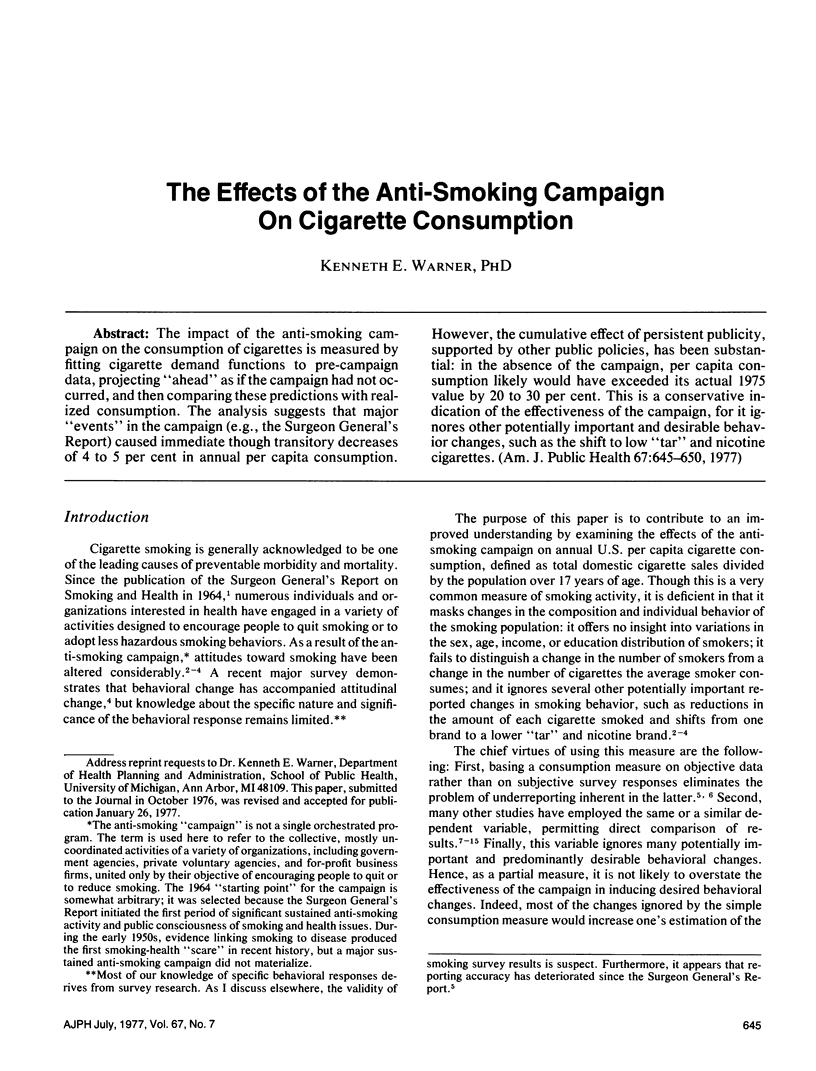
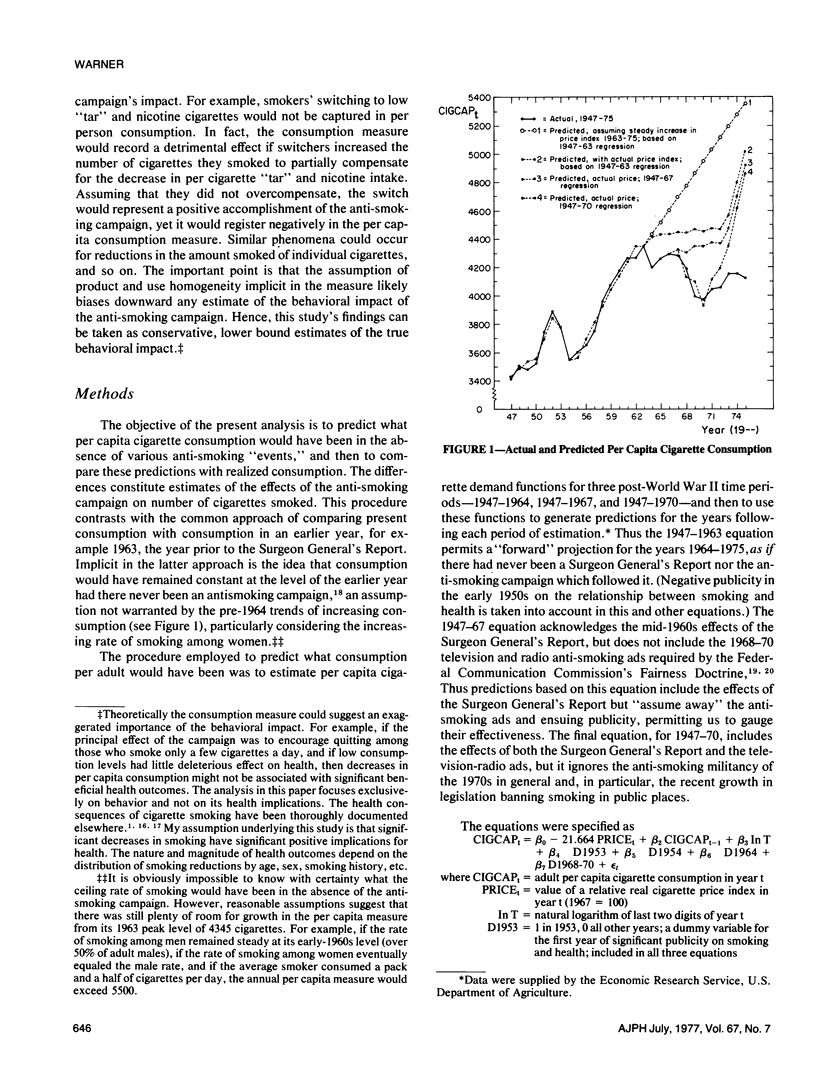
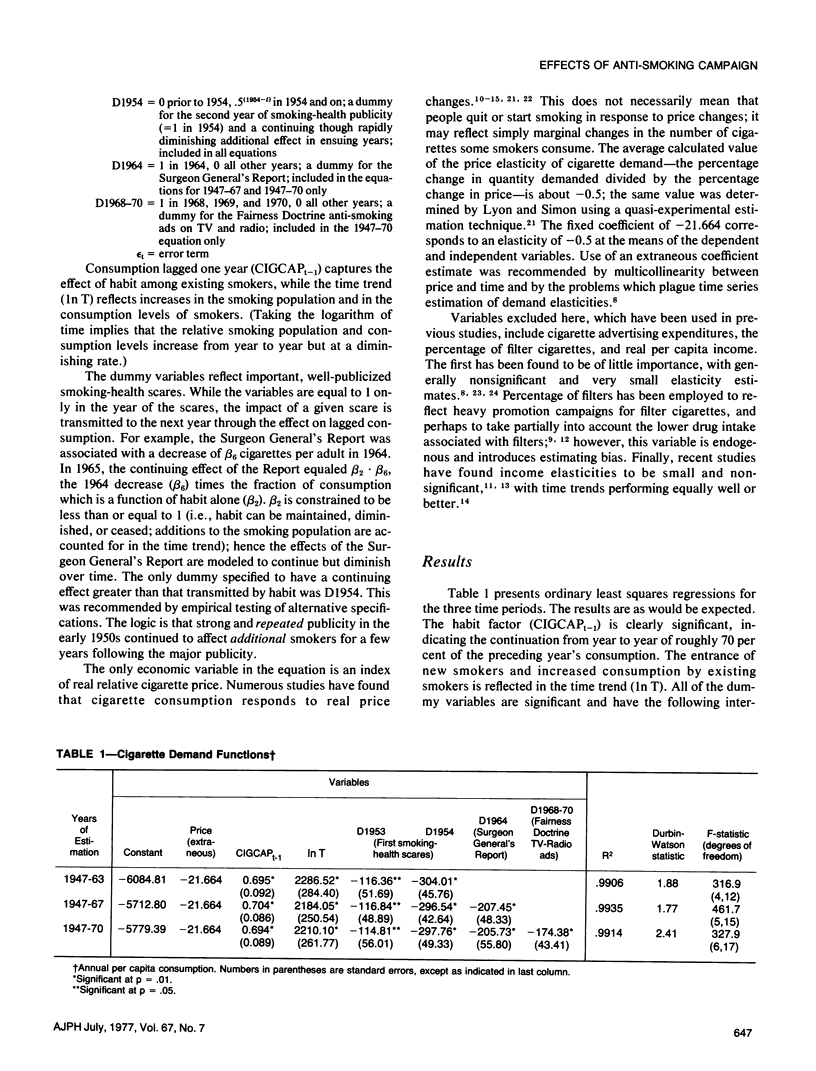
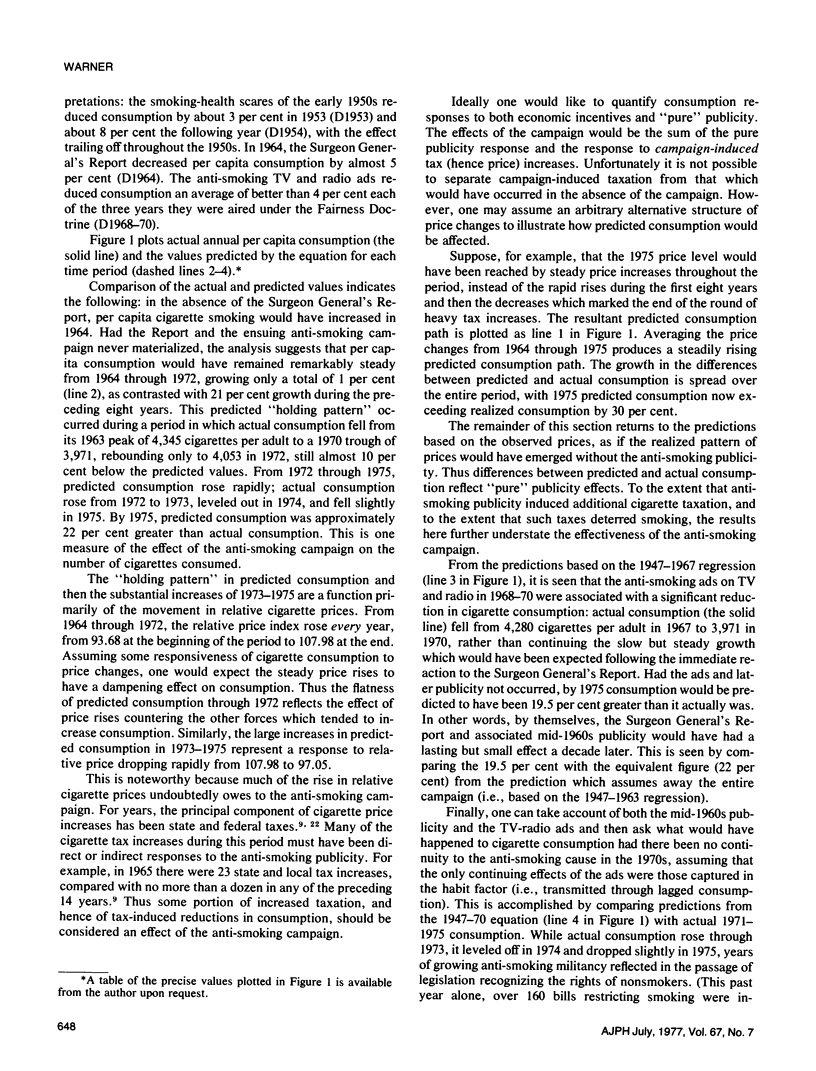
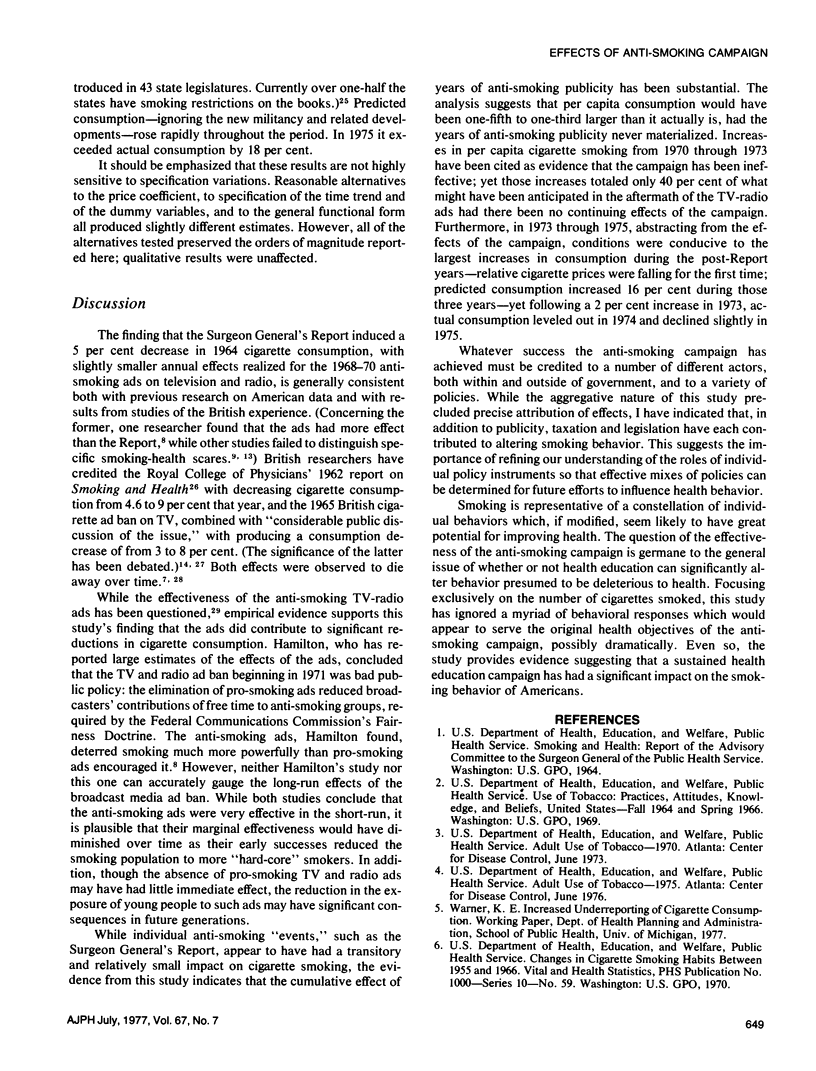
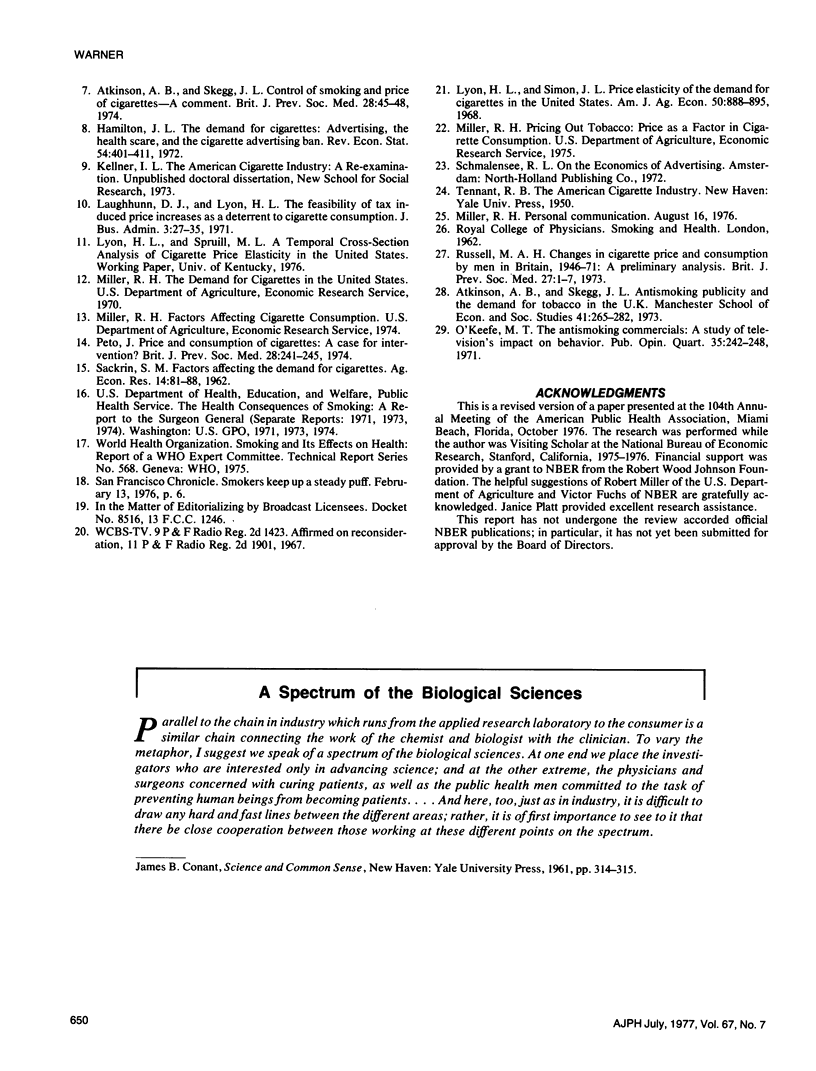
Selected References
These references are in PubMed. This may not be the complete list of references from this article.
- Atkinson A. B., Skegg J. L. Control of smoking and price of cigarettes--a comment. Br J Prev Soc Med. 1974 Feb;28(1):45–48. doi: 10.1136/jech.28.1.45. [DOI] [PMC free article] [PubMed] [Google Scholar]
- Peto J. Price and consumption of cigarettes: a case for intervention? Br J Prev Soc Med. 1974 Nov;28(4):241–245. doi: 10.1136/jech.28.4.241. [DOI] [PMC free article] [PubMed] [Google Scholar]
- Russell M. A. Changes in cigarette price and consumption by men in Britain, 1946-71: a preliminary analysis. Br J Prev Soc Med. 1973 Feb;27(1):1–7. doi: 10.1136/jech.27.1.1. [DOI] [PMC free article] [PubMed] [Google Scholar]


